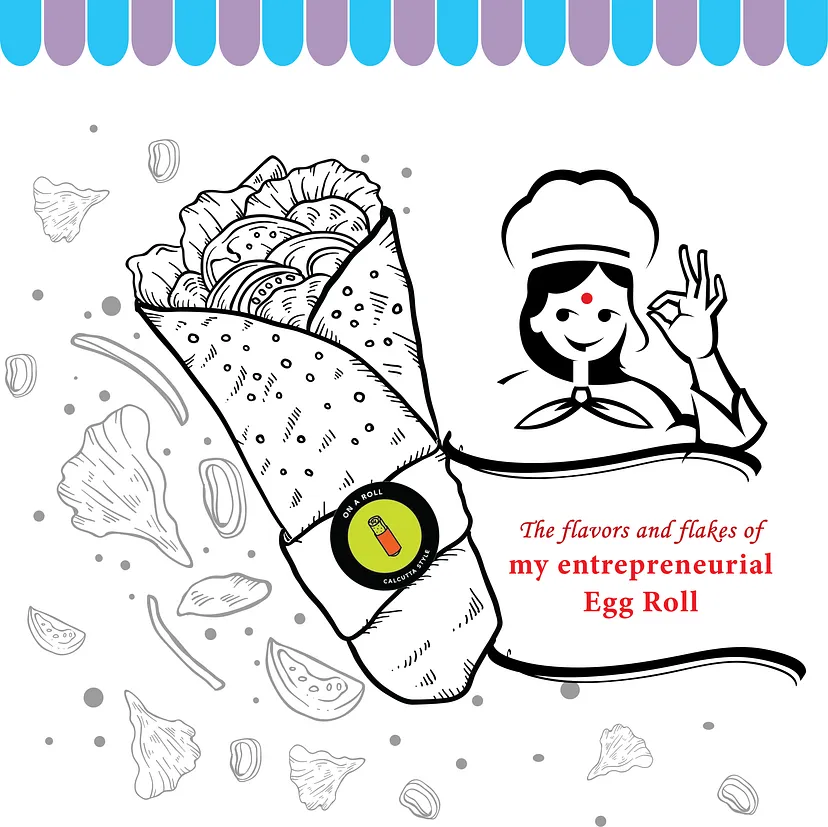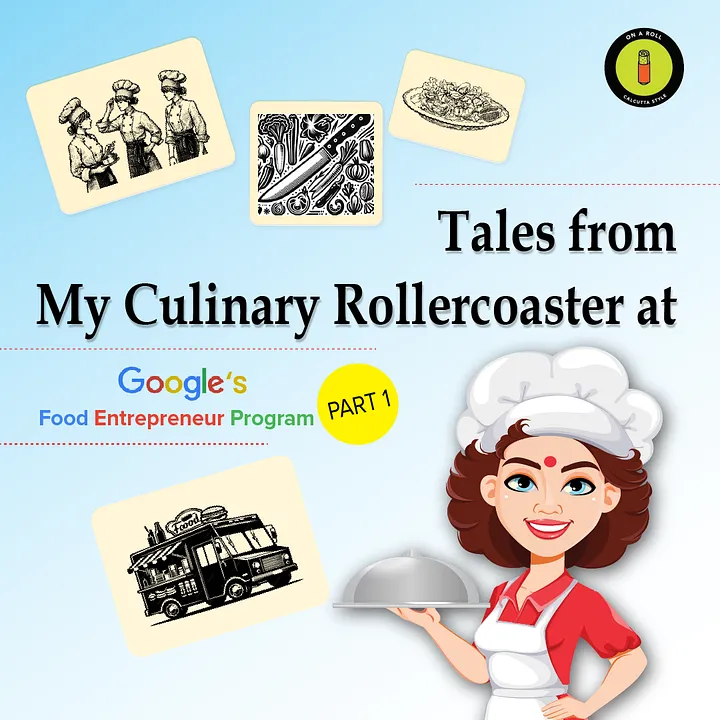It was November 2016, and I had just returned from a brief but memorable trip to India. My mind was still buzzing with thoughts from home when I received the news that would shape the future of my journey. On November 2nd, we landed back home, and just two days later, I was diving headfirst into something extraordinary — the Instrucktional program, a platform offered by Google. This was where the foundation of OnARoll would be built. It was exhilarating, inspiring, and the start of an incredible adventure I knew would be life changing.
It was a two-year rollercoaster designed to prepare me for every aspect of launching my food truck business. Branding, recipe development, logistics, and supplier management. Four distinct phases, yet they were blended in a way that made you learn them all at once. There was no waiting for one phase to be over before starting the next. It was full-on immersion.
Somewhere along this journey of learning and countless adventures in the kitchen, I had the pleasure of working with Audrey, one of the lead kitchen staff. Audrey was an incredibly humane and caring person, always checking in on me to make sure I was doing okay and lending a hand whenever I needed help. She was a truly pure soul. Audrey even worked with me for a time when I eventually started my own business. Though she is no longer with us, I often think of her and feel deep gratitude for having known and worked alongside her.
I think about the recipe development phase a lot. That was the part that really drew me in. Up until then, my cooking had been more intuitive — throw in a pinch of this, a dash of that, and trust your gut. But this program? It was all about precision. I had to learn to measure everything, make it repeatable, keep the taste consistent — down to a science. No 5% margin of error. It was both fascinating and frustrating.
There were moments when I felt completely out of my depth. One of those times was when I was asked to scale up my dough-making process. I went from making dough for four people at home to making it for two hundred. The first time I operated the industrial dough machine, it felt like the machine was mocking me. Flour covered everything — my clothes, my face. I remember commuting back home on the train, looking like I’d just walked out of a flour mill. People gave me odd stares, and I would laugh it off. It was stressful, but it was a different kind of stress — the kind I secretly enjoyed because I knew I was learning.
In the recipe development phase, the challenges were less about logistics and more about taste. I was creating a fusion between the traditional Kathi rolls I grew up with and something that would appeal to a diverse crowd. There were moments of tension when people who had never tasted Indian food before critiqued my recipes. It was hard not to feel defensive — “What do they know about Indian food?” I’d think. But I quickly realized that they were my customers. If I couldn’t win them over, I’d be setting myself up for failure.
Shrimp Kathi rolls, avocado chutneys — these were the kinds of experiments I never would have considered back home in Calcutta. But here, I had to adapt, tweak the recipes, and fuse culinary traditions to create something new. The challenge was exhilarating. I spent weeks perfecting a dough that was whole wheat, crispy, and still reminiscent of the Calcutta Street rolls I loved — minus the unhealthy oil and maida.
The feedback was relentless. “The sauce is too runny,” they’d say. “The bread isn’t crispy enough.” I had to keep tweaking, testing, and retesting until I hit the right balance. There were days when I wanted to give up, but deep down, I knew I had to keep going.
The stress of the food truck that was assigned to me, though, was different. I’d driven sedans and SUVs, but this truck was something else. After just an hour of online training, I was handed the keys. It felt like being thrown into the deep end. This wasn’t just any truck — it was my kitchen on wheels. It was a 30-year-old relic, fully equipped with burners, a fridge, oil cans, and cooking utensils rattling in the back. Navigating the narrow streets, parking it in designated spots, and then serving hundreds of people was one of the most nerve-wracking yet memorable experiences of my life.
But as the days went on, I learned to embrace it. Each challenge was an opportunity to grow, and I started seeing the food truck not as a beast to tame, but as an essential part of my journey.
Then came the part that was completely foreign to me — branding and positioning. This was a world I had never stepped into before. Creating the logo, deciding on the truck wrap, writing ingredient lists for health regulations — it was overwhelming at first. But once I got the hang of it, I realized it was as much a part of my business as the food itself. The food truck wasn’t just about feeding people; it was about telling a story, and the brand was a huge part of that narrative.
There were also weeks allocated to supply chain management, and no one in the program could help me with sourcing Indian ingredients. I had to figure it out on my own. I visited countless stores in the Bay Area, comparing prices down to the gram, negotiating for bulk supplies, and ensuring the consistency of my ingredients. I even dragged chefs along with me at times, trying to learn the ropes of a world I had never navigated before. But that’s the thing — I thrive in chaos. I like to do the hard work up front so that later, when it really counts, things run smoothly.
And here I was, after months of grinding, sitting in the driver’s seat of my food truck, my heart swelling with a sense of accomplishment. I had survived the chaos, the flour-covered commutes, the stressful driving, and the intense recipe development. I had conquered them all. And as I looked back at the journey so far, I knew one thing for sure — I wasn’t just running a food truck. I was building a dream, one Kathi roll at a time.
Challenges never stopped. And I dealt with all of them with a smile on my face. But what kind of challenges, you ask? More on that later.



